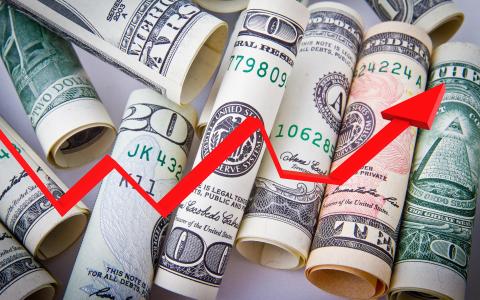
(Yahoo!Finance) - A common refrain around the Federal Reserve in recent months has been the notion that interest rates will remain "higher for longer."
What that means: even after the central bank ends its current rate-hiking cycle and begins the process of bringing rates down, interest rates will remain higher than what the Fed thinks would be needed to sustain economic growth with inflation at 2%.
What, exactly, "longer" entails is at the heart of investor debates about the Fed's policy future. But on Wednesday, the central bank offered further outlines of its answer — at least three more years.
Alongside its policy decision on Wednesday to hold rates in a range of 5.25%-5.5%, a 22-year high, the Fed released updated economic forecasts for interest rates, unemployment, growth, and inflation.
The so-called dot plot, which offers officials' forecasts for rates in the coming years, showed most Fed officials think one more rate hike will be needed this year.
But the changes to 2024, 2025, and the first look at 2026 offered even more clues about where the central bank sees things headed.
Since offering these forecasts in June, the central bank took away 0.50% worth of rate cuts for 2024, 0.50% worth of rate cuts for 2025, and suggested rates would end 2026 above where rates are expected to land over the longer run.
Now, as readers will recall, just two days ago we argued that the Fed's economic forecasts don't quite offer a destination for the Fed. And throughout his press conference on Wednesday, Fed Chair Jerome Powell emphasized these best estimates are just that — estimates.
"It's a culmination of individual forecasts from 19 people, and then what you're seeing are the medians," Powell said Wednesday. "So I wouldn't want to bestow upon [the dot plot] the idea that it's really a plan."
And though perhaps not a plan on where the Fed's benchmark policy rate will go, there are suggestions in these estimates of where the Fed sees the economy headed and what the economy will need to get there.
Namely: The Fed sees higher real rates, meaning interest rates minus inflation, working to slow an economy growing more than expected. So while the headline on Wednesday suggested one more rate hike is needed this year, the Fed's lowered inflation outlook suggests officials think even higher real rates are required in 2023.
As Powell said Wednesday, "It's a real rate that will matter and that needs to be sufficiently restrictive."
And if this sounds just as squishy as "higher for longer," don't worry, it's even fuzzier.
"I would say you know it's sufficiently restrictive only when you see it," Powell said. "It's not something you can arrive at with confidence in a model or in various estimates."
In central banking as in life.
By Myles Udland · Head of News



